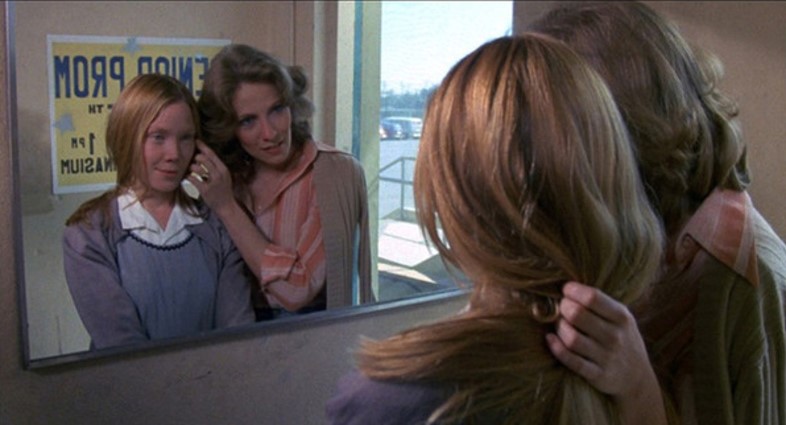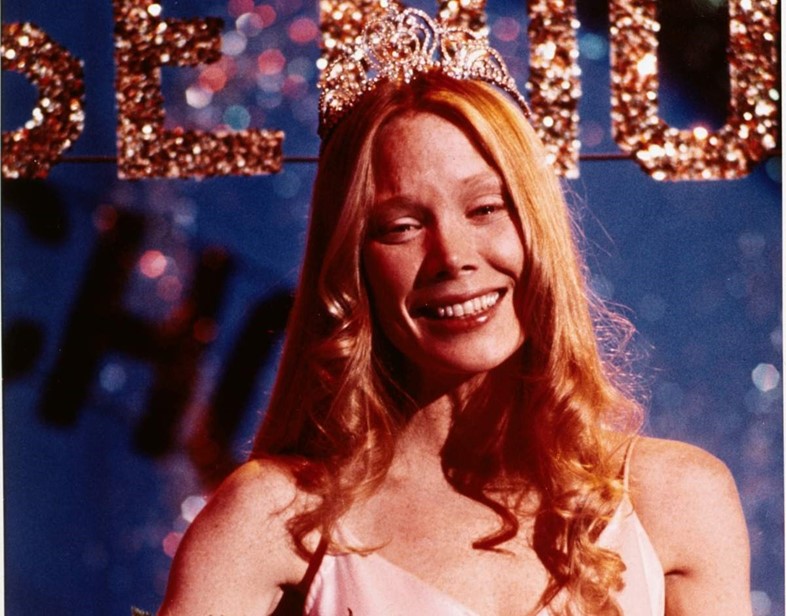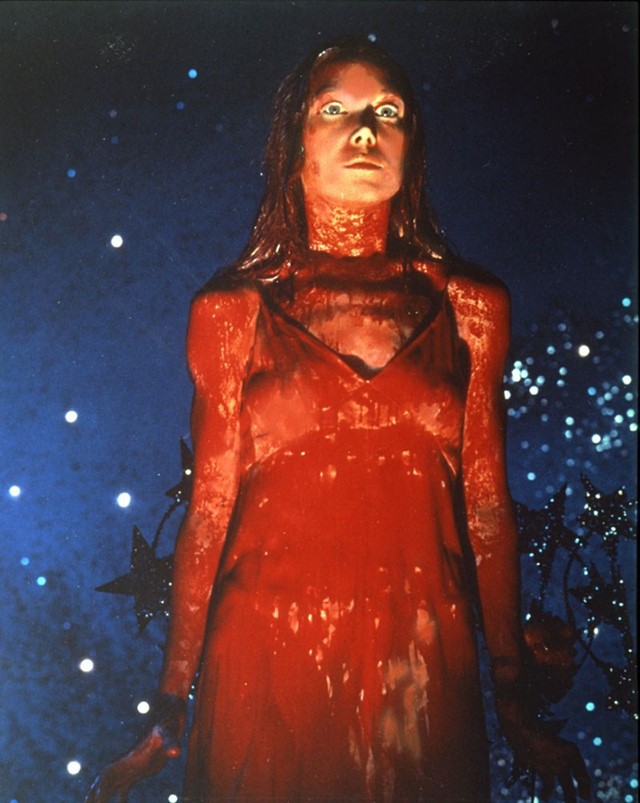Roleplay is a new column that explores the iconic style of a cult film character. Visit this page to keep up with the latest features.
The arrival of The Diary of a Teenage Girl in cinemas has thrown a new light on teen girl sexuality in the 70s, as actress Bel Powley goes on a quest of sexual discovery after sleeping with her mother’s boyfriend. It’s an honest look at a topic that’s been explored (although in slightly more shrouded terms) for years – with the horror genre providing plenty of space for women to grapple with desire, although they quite often then got punished for it. With 70s icon Sissy Spacek as the lead, Brian De Palma’s 1976 film Carrie is a story about the tension between – and horrific consequences of – religious fervour and burgeoning teen sexuality.
With gawky long limbs and the wardrobe of a Sunday school teacher, the virginal 16-year-old Carrie is a million miles away from her womanly peers – when she gets her period in the school showers, she freaks out and assumes she’s dying. Her mother then makes her pray for forgiveness for the (sexual) sin that caused the “curse of blood” to come upon her. It’s all in anticipation of the moment that she will step onto the stage at her high school prom and be the victim of a truly cruel (and bloody) prank – giving us one of the horror genre’s most iconic fashion moments. We unpick the meaning behind Carrie’s costume.
THE LOOK
From the first scene, we know that Carrie isn’t like other girls. While they do PE class in tight shirts and shorts pulled up as high as they will go, she’s hiding in the back in boxy, unfitted clothes, her long hair covering her face. While her classmates don flares, peasant blouses, make-up and the bouffant hair of the day, Carrie’s high school clothes consist of dowdy cardigans in scratchy wool, long dresses and white socks pulled up to the knee. This total plainness is what makes her prom transformation so stunning: at the instruction of a kindly teacher, she’s put on make-up, added some curls into her hair and is even showing a little cleavage in her floor-length silk dress.
THE LOGIC
Throughout the film, Carrie’s clothing is childlike – it’s deliberately unfashionable and unflattering, designed to keep her as innocent as possible (and give her prom transformation maximum impact). For her mother, clothes and emerging womanhood are intimately tied to sinfulness – “Take off that dress, we’ll burn it together and pray for forgiveness,” she pleads as she sizes up her daughter as she’s about to go to the dance, saying she can see Carrie’s “dirty pillows” (her breasts). The most important line in this scene? “I might’ve known it would be red,” her mother says of the gown, despite the fact it’s actually a shade of palest pink. As the film shows – Mrs White’s words will have an eerie resonance come the end of the night, when pranking teens pour pigs’ blood all over Carrie (and are promptly slaughtered by her telekinetic powers in a red-hued scene).
THE LEGACY
Although it’s gone through the rounds of several remakes (most recently in 2013, starring Dazed cover star Chloë Grace Moretz in the lead role), the original Carrie has truly earned its place in the horror movie hall of fame, inspiring fashion shoots, music videos and with references cropping up in other films, like Diablo Cody’s Jennifer’s Body. A nod to it most recently appeared in Rihanna’s internet-breaking video for “Bitch Better Have My Money”, where the singer gazes, blood-drenched, into the camera’s lens.






